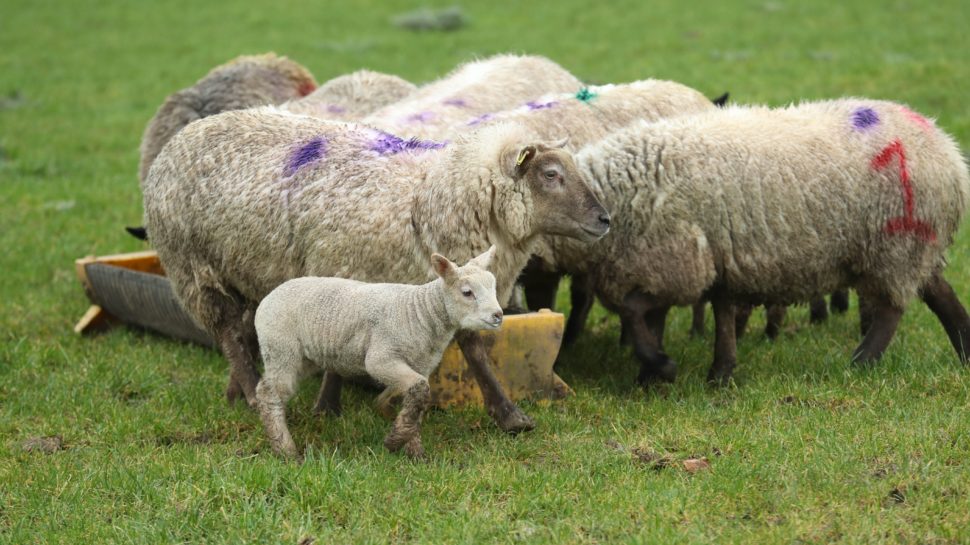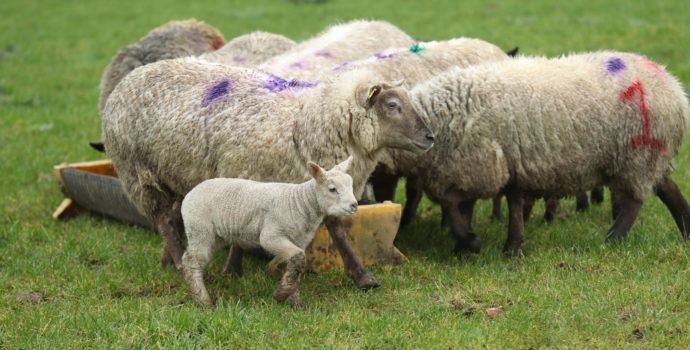Sheep Council Report November 2024

- Market Report
- Lamb Price: Spring Lambs are making €7.50kg to €7.90kg on weights to 23kg. Cull Ewe prices are ranging from €3.80 to €4.20kg in general.
- Supplies: Total throughput to date in 2024 is 2,140,618 head which represents a 9% decrease when compared to the same period in 2023. Spring lamb throughput is running 96,904 head or 9% behind the same period in 2023. Hogget throughput is running 84,061 or back 9% on 2023 figures. Ewe and Ram throughput is running 40,707 head or back -15% from the same period in 2023.
- Market Conditions; Tighter lamb supplies and some stability in demand from domestic and export markets over the past number of weeks have contributed to stronger lamb prices. In the first half of 2024, EU sheep production declined by 7.4% year on year. This was largely driven by the continued structural decline in sheep flocks, combined with poor weather and grass availability. EU sheep meat prices remain uncompetitive on the global market, with exports forecast to fall by 10% by the end of 2024. EU imports of sheep meat have declined, falling by 10% in the first half of 2024, with the UK falling by 17% and New Zealand by 2%. The Irish ewe flock contracted by 3.7% in the December 2023 census. This decline of over 107,000 head is contributing to the current tightness in supply and is projected to remain tight over the coming weeks.
- Live Export: Live sheep exports up to June 30th 2024 stands at 17,504 head.
- Continued engagement with MII and sheep factory management.
- Increased QA Bonus: IFA continue to pursue an increase in the QA bonus to 30c/kg and have had discussions with Bord Bia, MII and factory representatives on the issue.
- Farmers are encouraged to sell hard while moving lambs as they become fit.
- IFA publish lamb price updates twice weekly with a comprehensive market report on Friday all of the latest data is available at www.ifa.ie
- Review of Bord Bia Origin Green Producer Standard
- IFA continue to engage with Bord Bia on the Origin Green Producer Standard review.
- IFA have raised concerns at the direction of travel of the Bord Bia proposals in relation to all elements of the standard and of the inspection process.
- Further direct engagement with Bord Bia on the issue is planned.
- IFA are demanding a simplified more farmer friendly audit process to reduce the burden of the scheme on farmers.
- Budget 2025
- IFA have secured an additional €7m in funding for the national sheep scheme bringing the total budget to €22m.
- Payment rates will increase by €5/ewe brining total payments to €13/ewe and total ewe payments to €25/ewe including the sheep improvement scheme.
- IFA will be engaging with the DAFM to ensure the new scheme is practical to implement and reflects the number of ewes on farm and avoids unnecessary leakage of monies or admin bureaucracy for farmers.
- Sheep Improvement Scheme
- 18,627 applications have made applied to the scheme accounting for 1.9m ewes.
- IFA successfully secured an amendment to the Genotyped ram action allowing farmers to choose an alternative year if unable to secure a 4/5 star ram in the year nominated.
- IFA are seeking changes to the retention period in the scheme.
- Payments will be issued to farmers in November 2024.
- National Sheep Welfare scheme.
- IFA secured €15m for a new sheep scheme for 2024.
- The scheme will pay participants €8/ewe bringing the total direct support for sheep farmers to €20/ewe. Payments are available for over 1.87m ewes.
- The scheme is based on two categories of actions, with two actions within each category all costed at €4/ewe with participants selecting one action from each category to receive the full €8 payment.
- Category 1 actions are shearing or Body Condition Scoring with the category 2 actions providing the option to select clostridial vaccination or plunge dipping.
- Payments will be issued to farmers in December 2024.
- Early-stage support for producer organisations
- IFA continues to engage with DAFM on the new scheme.
- IFA has demanded all existing lamb producer groups are eligible for this support.
- The scheme is to open to producers before the final quarter of 2024.
- Dog Control
- IFA attended the third meeting of the Dog control stakeholder group in September.
- Advancements to date; Banning of certain dog breeds; Targeting neutering scheme to be implemented in 2024.
- IFA set out its key priorities to the group which will be progressed over the lifetime of the group.
- Committee members continue to promote the ‘No Dogs allowed’ campaign in their local regions and have been active lobbying local TD’s and Ministers for increased sanctions for irresponsible dog ownership.
- IFA proposals include;
- A single National Database for all dogs corelating licensing and microchipping and identifying the person responsible for the dog but at a minimum alignment of the existing licensing and microchipping records to one central access point.
- Full enforcement of microchipping and licensing obligations of dog owners for all dogs.
- Stronger powers of enforcement for dog wardens and Gardaí and clarity of these powers.
- Increased on the spot fines for failing to comply with the microchipping and licensing requirements.
- Increased sanctions and on the spot fines for failing to have the dog under control.
- Significant on the spot fines for dogs found worrying livestock.
- Legal requirement for dogs to be microchipped and licensed and identified on the NVPS (National Veterinary Prescribing System) prior to any veterinary treatment or prescribing of medicines by veterinary practitioners.
- Authority to apply the legislative obligations to dogs in border regions owned by persons not resident in the state.
- Wool
- IFA continues to pursue the inclusion of shearing as an action in the new Sheep Improvement Scheme to offset the huge losses incurred for this farm practise.
- It costs approx. €8 to present a 3kg fleece rolled and packed on a farm. Costing farmers over €21m annually. Shearing costs must be directly supported to incentivise farmers carrying out this vital health and welfare measure and to ensure wool is presented in optimum condition for future added value use.




